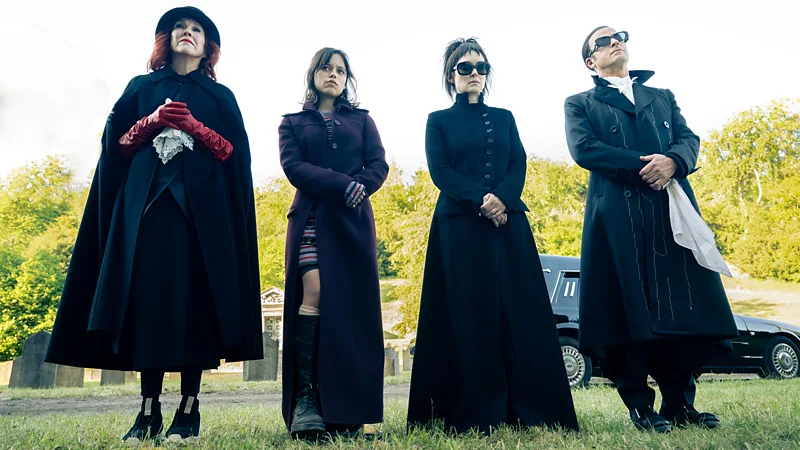The Gothic sensibility, an ever-evolving blend of darkness and beauty, has made its way through art, architecture, literature, and fashion for centuries. It has its origins in medieval Europe, where towering cathedrals and ornate sculptures laid the foundation for a visual and emotional style that continues to captivate and influence today’s culture. As the Gothic style changes, it remains a compelling expression of the human condition, blending horror with the sublime.
Origins and Wonders of Architecture
The roots of Gothic aesthetics are often found in the architecture of medieval Europe. The term “Gothic” originally referred to the Germanic Goths, who played a role in the fall of the Roman Empire. However, the style emerged in the 12th century, when Abbot Suger renovated the Abbey of Saint-Denis in Paris, a pivotal moment. Suger’s designs included elements such as ribbed vaults and flying buttresses, which made it possible to build taller, more elaborate structures. This architectural revolution aimed to create spaces that were not only functional but also imbued with a sense of divine majesty.
Notre Dame Cathedral and Westminster Abbey are quintessential examples of Gothic architecture. Their soaring spires, intricate stained glass windows and grand arches were designed to inspire awe and reflect the grandeur of the divine. These elements, initially practical for supporting large structures, soon became decorative symbols of spiritual and artistic aspiration. Gargoyles, originally functional as water faucets, were sculpted into grotesque forms, adding a touch of the supernatural to these sacred spaces.
Gothic Literature and Art
Gothic sensibilities soon pervaded literature and art, further shaping the style’s development. The style’s attraction to the sublime – the union of beauty and awe – became prominent in the late 18th and early 19th centuries. Gothic literature, with its haunted castles, mysterious strangers, and psychological torment, delves into the dark aspects of the human experience. Works such as Mary Shelley’s Frankenstein and Bram Stoker’s Dracula explore themes of monstrosity, isolation, and the limits of human knowledge, all while connecting to the distinctive aesthetics of the Gothic.
The visual arts of the period also reflect this Gothic preoccupation with the terrifying and the beautiful. Henry Fuseli’s 1781 painting The Nightmare shows a demonic figure sitting on the chest of a sleeping woman, evoking both fear and fascination. Similarly, works by Johann Heinrich Fuseli, such as The Nightmare and Albert Joseph Penot’s The Bat Woman, reflect the Gothic’s blend of the monstrous and the sublime. These artists captured a sense of dread and uneasiness, using their work to explore the dark corners of the human psyche.
Gothic Revival and Victorian Influences
The 19th century saw a revival of Gothic architecture and aesthetics, often referred to as the Gothic Revival. This period reimagined medieval Gothic forms in a contemporary context, including notable examples such as the Houses of Parliament in London and the New York Public Library. The revival was not simply about copying past styles, but about reinterpreting them in a way that resonated with the Victorian era’s fascination with history and horror.
Victorian art and literature continued the exploration of Gothic themes, often with a more psychological and symbolic approach. The Pre-Raphaelites, including Sir John Everett Millais, incorporated Gothic elements into their romantic and symbolic works. Millais’s Ophelia and A Huguenot on St. Bartholomew’s Day blended historical and literary themes with Gothic aesthetics, depicting both the romantic and the tragic.
The Rise of the Goth Subculture
The 20th century brought Gothic sensibility into popular culture through the emergence of the Goth subculture. The goth movement, influenced by post-punk music and fashion, embraced the dark, romantic qualities of the aesthetic. Bands such as Siouxsie and the Banshees and The Cure defined the music landscape, while fashion of the time reflected the subculture’s distinctive style—black clothing, dramatic makeup, and an overall grim but glamorous look.
Tim Burton’s films, starting with Beetlejuice in 1988, played a significant role in popularizing and developing the gothic aesthetic in contemporary media. Burton’s distinctive style, characterized by a darkly whimsical tone and visually striking design, reflects his fascination with the horrific and the surreal. Characters such as Lydia Deetz and Edward Scissorhands are emblematic of the gothic protagonist, combining elements of the monstrous and the beautiful.
